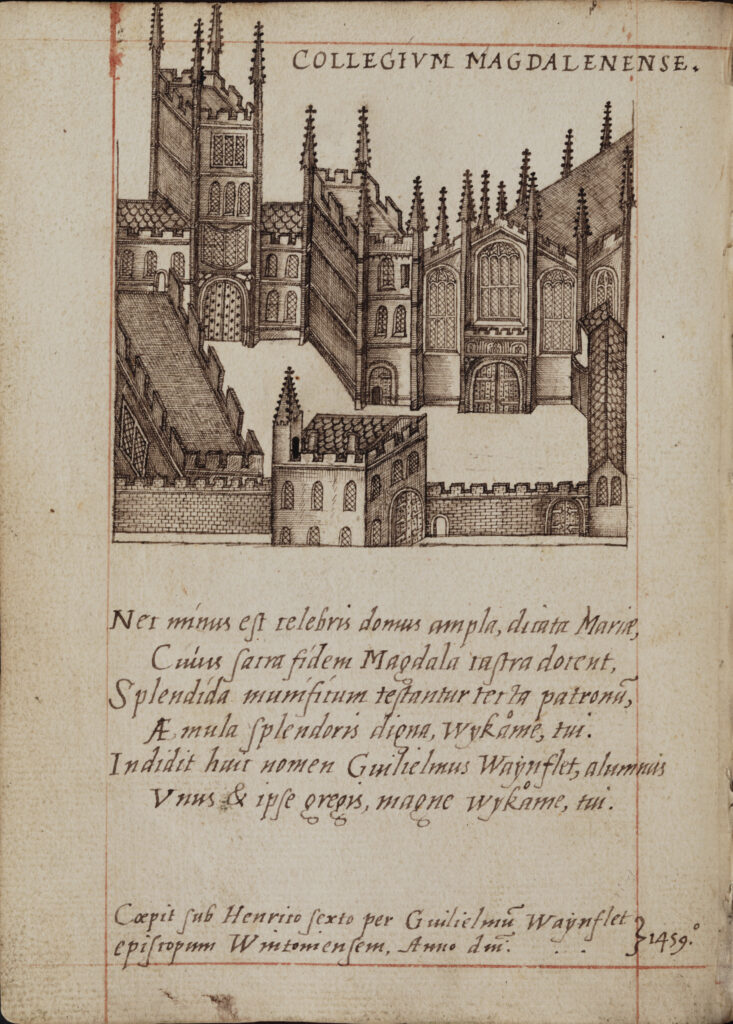
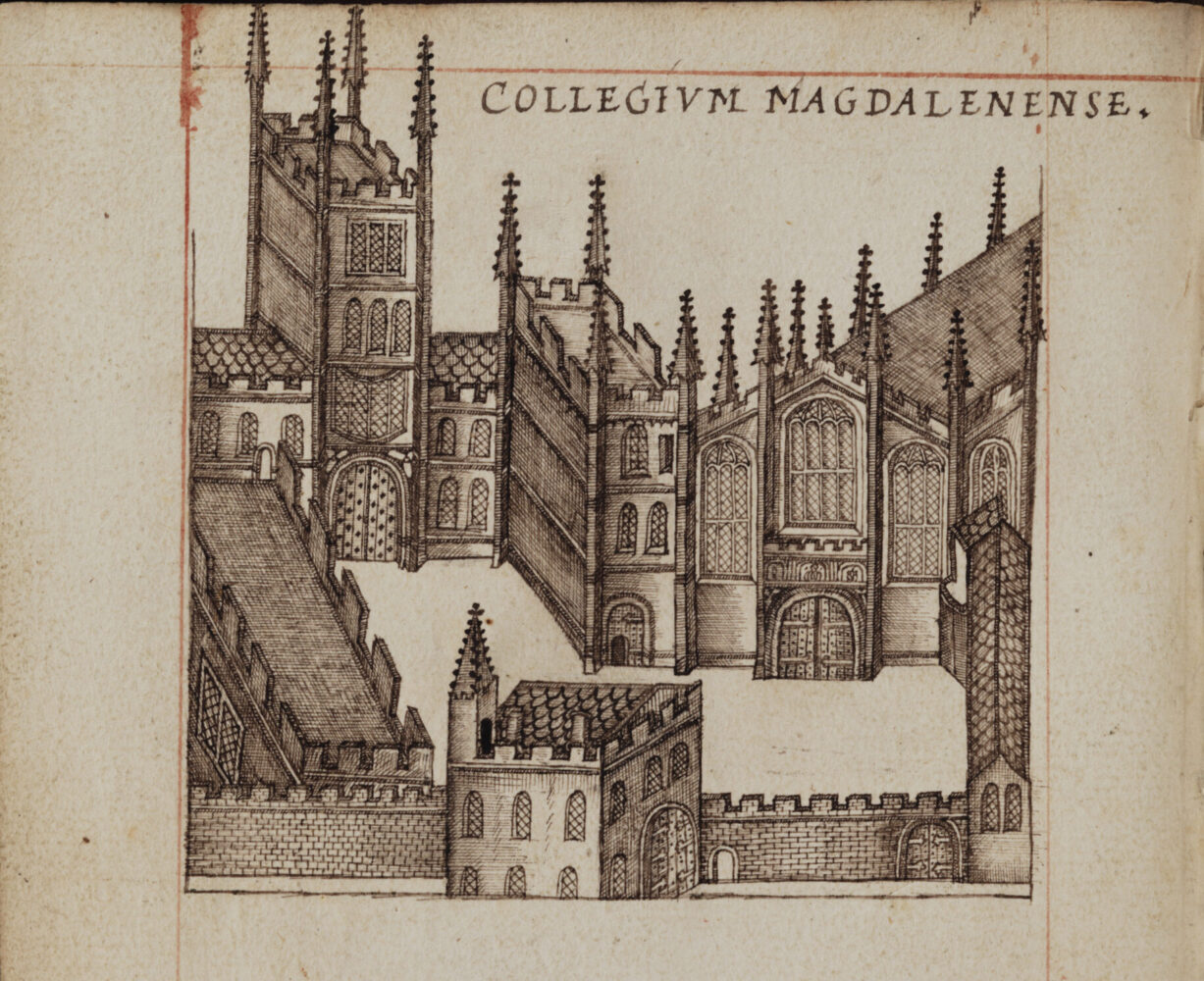

Towns and cities in early modern England were hotbeds of disease. The plague returned regularly during this period, and there is evidence of regular outbreaks in Oxford, which were exacerbated by students returning to the city from elsewhere, bringing fresh waves of disease with them.
The college’s archive illustrates how its members coped in the face of repeated pandemics. One common tactic was simply to leave Oxford. With properties in 20 English counties, Magdalen could afford to evacuate its members to estates located at places like Witney (Oxon) and Wallington (Berks). The college’s account books record the costs incurred as a result of these evacuations, as well as in relation to other expenditures ‘in tempore pestis’.
Other entries in the accounts record some of the efforts taken to mitigate plague at Magdalen itself. In 1533/4, the college ordered fires to be burnt as a form of ‘disinfectant’. Such things were largely ineffective, and a later entry records that one of the fellows, John Wyman (1531-47), was being nursed in college, ill with plague. He recovered, but others were not so lucky. In the 1670s, smallpox raged through Magdalen, killing at least three members, including William Reeks (F 1671–75), who died on 27 May 1675.
Plague and disease not only disturbed life inside Magdalen, but also hindered the administration of its affairs outside Oxford. Thus, in 1632, evidence crucial to a lawsuit in which Magdalen was involved could not be gathered because the witness lived in a town that was ‘dangerously infected with the plague’.


Magdalen College
This is the earliest known depiction of Magdalen, drawn by John Berebloke in 1566. A refuge for the sick-poor was maintained in the basement of the buildings on the right.
Bodleian Libraries, Oxford, MS. Bodl. 13, part 1, fol. 8v
Account Books
These account books from 1500 and 1503 contain various entries of expenses incurred by the college during times of plague.
Click on the red circles on the images for the details of these entries.
Magdalen College Archives, LCE/2(ix), fol. 106v-107v & LCE/2(xii), fol. 139v

Walter Charles (F 1492–1502) is paid 5s.2d. for going to oversee the place where the college community stayed during the plague.
(Solutum M. Charylls pro expensis in eundo pro supervisione loci pro societate collegii im[m]oranda in tempore pestis ut patet billam eius, vs. iid.)

Edward Grove (F 1492–1504) is paid 12s.5d. for repairs to his house at Watlington in which the college fellows stayed during the plague.
(Solutum M. Edwardo Grove pro quibusdam expensis factis circa reperacionem eiusdem domus aput Watlington in qua manserint socii collegii tempore pestis ut patet billam, xiis. vd.)

£5.6d is spent for 607 sheep which died as a result of livestock pestilence.
(Solutum pro 607 ovibus casualiter mortuis generali mortalitate animalium anno presenti, vli. vid.)

Richard Arden (F 1491–1505) is paid £17.17s.4d. for the sustenance of the college community during its stay at Wallington as a result of pestilence in Oxford.
(Solutum M. Ricardo Arden pro communis sociorum et scolarium aput Walington in tempore pestis, xviili. xviis. iiiid.)
Thomas Wolsey (F c.1497–c.1502), William Webb (F 1494–1504), Thomas Knollys (F c.1495), and John Higden (F c.1495) are paid an unrecorded amount for the sustenance of the community during its stay at Witney as a result of the plague.
(Solutum M. Wuley, Web, Knolles et Higden pro communis sociorum et scolarium aput Wytney in tempore pestis.)

Entry for a payment in 1503 to Edward Martyn (F 1496–1504) of 8d. for beer consumed by the college community then staying at Witney for fear of an outbreak of the plague.
(Solutum M. Martyn pro cervisia recepta per eum apud Witney [...] erga adventum scolasticorum illuc pro metu pestis, viiid.)
Account Book
This account book from 1533/4, shown below, contains various entries for payments made in times of plague (tempore pestis).
Click on the red circles on the images for the details of these entries.
Magdalen College Archives, LCE/4(iii), fol. 46r

a total of 5s. to Hawlle the charcoal burner (carbonarius) for fires burned in college, likely as a form of ‘disinfectant’.
a total of 5s. to Hawlle the charcoal burner (carbonarius) for fires burned in college, likely as a form of ‘disinfectant’.

36d. ‘at the order of the President’ (exmandatodomini presidentis) for meals assigned to the clerks and janitors (clericorum et ianitoris) who stood in during services for those choristers ‘absent because of the plague’ (absentium causa pestis).
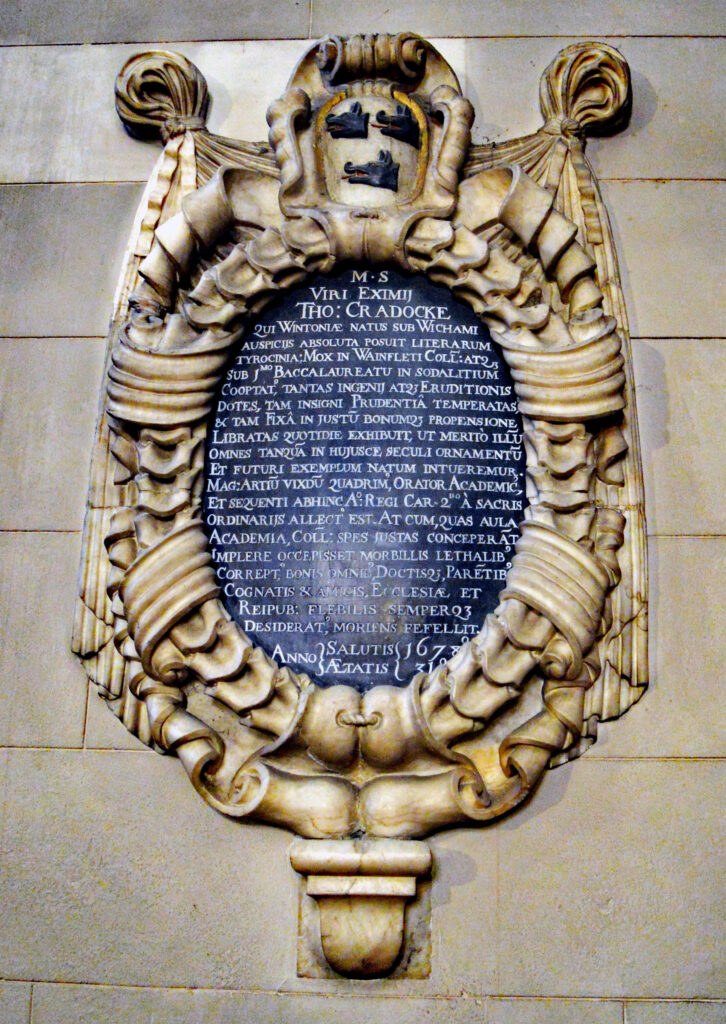

Thomas Cradocke (d. 1679)
Thomas Cradocke was Fellow of Magdalen when he died in March 1679 from smallpox. Little is known of Cradocke besides his academic record. He matriculated at Magdalen in 1666, aged 18, and took his BA in 1670. He earned his MA in 1673.
Cradocke became public orator for the University from 1677, a role that involved presenting honorary degrees. He was Fellow of Magdalen from 1671 until his death. This monument, located in the college chapel, is in his honour.
Photo © Martin Cornish
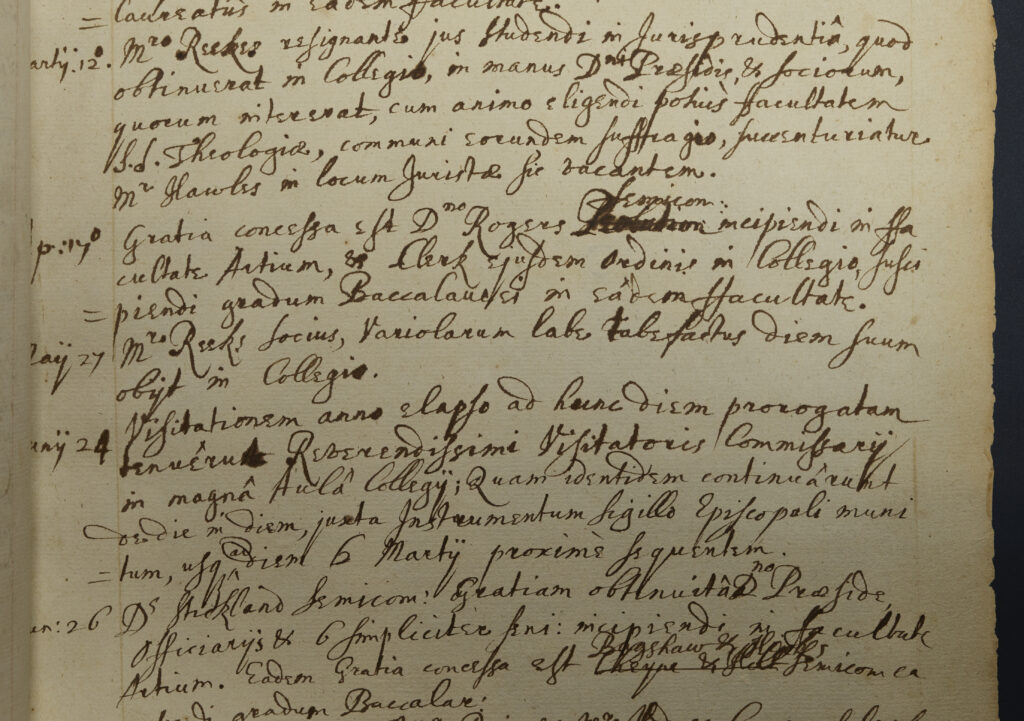

Death of a Fellow
The page from this register, which was maintained by various Vice-Presidents of Magdalen between 1661 and 1776, records the death of William Reeks (F 1671–75) from smallpox (variolarum) on 27 May 1675. Reeks is perhaps best known for his Latin essay, ‘Oedipus Magdalenensis’, which offers an interpretation of the 16th-century gargoyles, later known as the ‘hieroglyphics’, which adorn the Cloister.
Magdalen College Archives, VP1/A1/2, fol. 51r
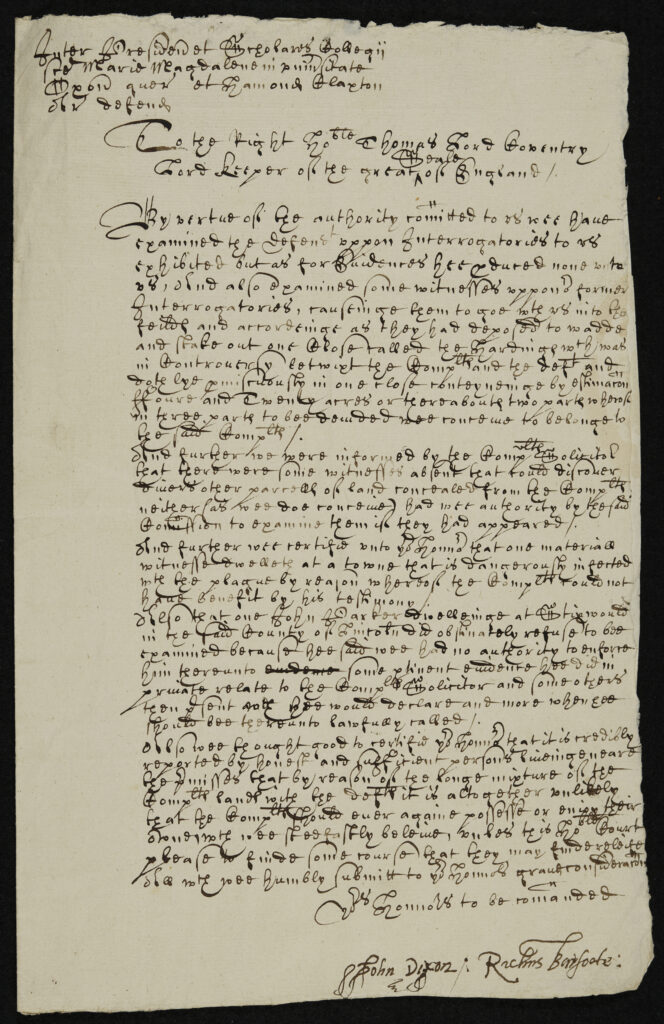

Plague Infection
This report, written in 1632 by John Dixon and Richard Barfoote, commissioners appointed to take evidence in a suit between Magdalen and Hamond Claxton, esq., shows how plague could impact college affairs outside Oxford.
Having examined various witnesses, Dixon and Barfoote conclude that the land at issue in the suit did belong to the college but note that they had been unable to speak to one important witness because he ‘dwelles at a towne that is dangerously infected with the plague’.
Magdalen College Archives, Horsington 105